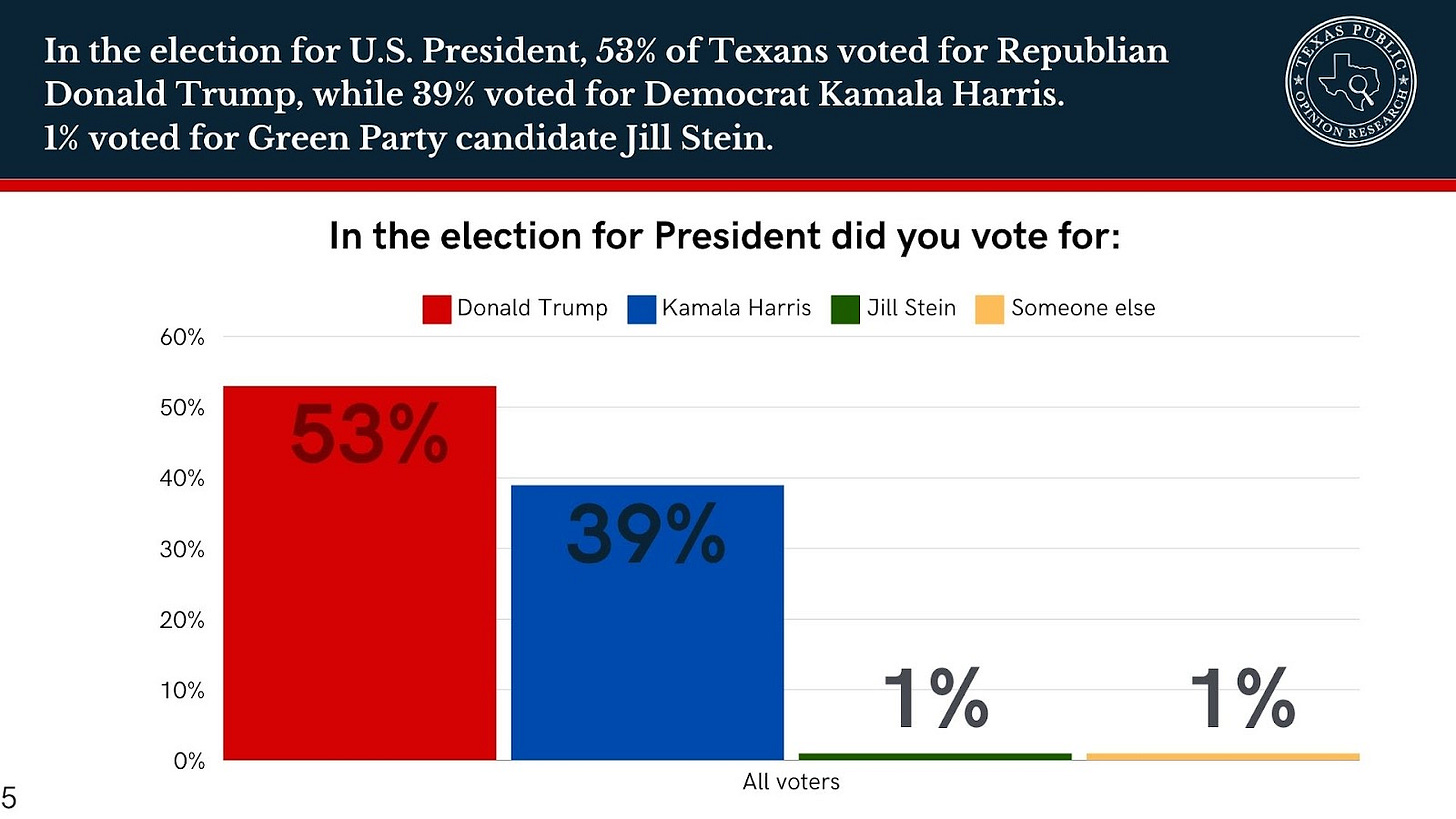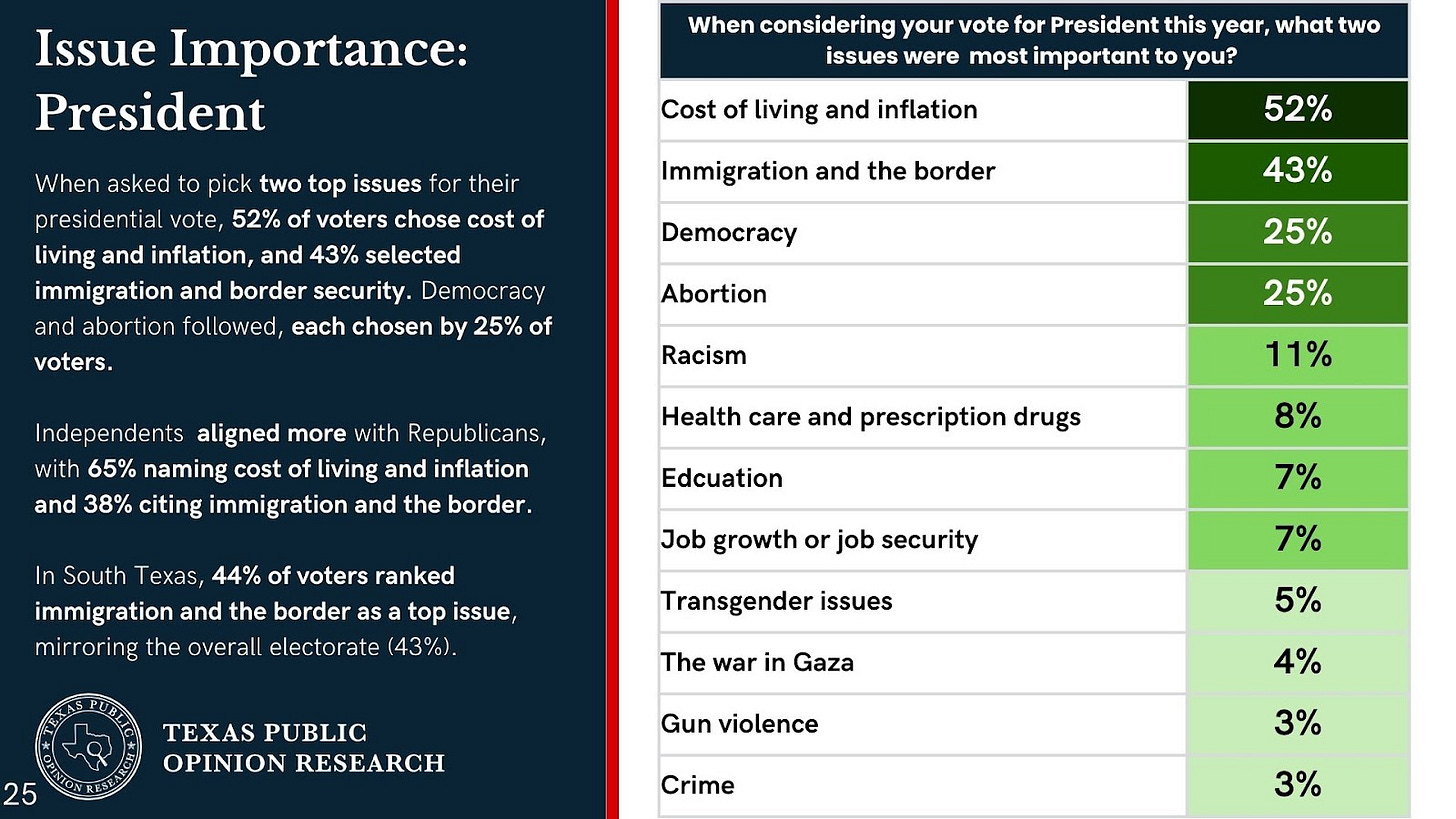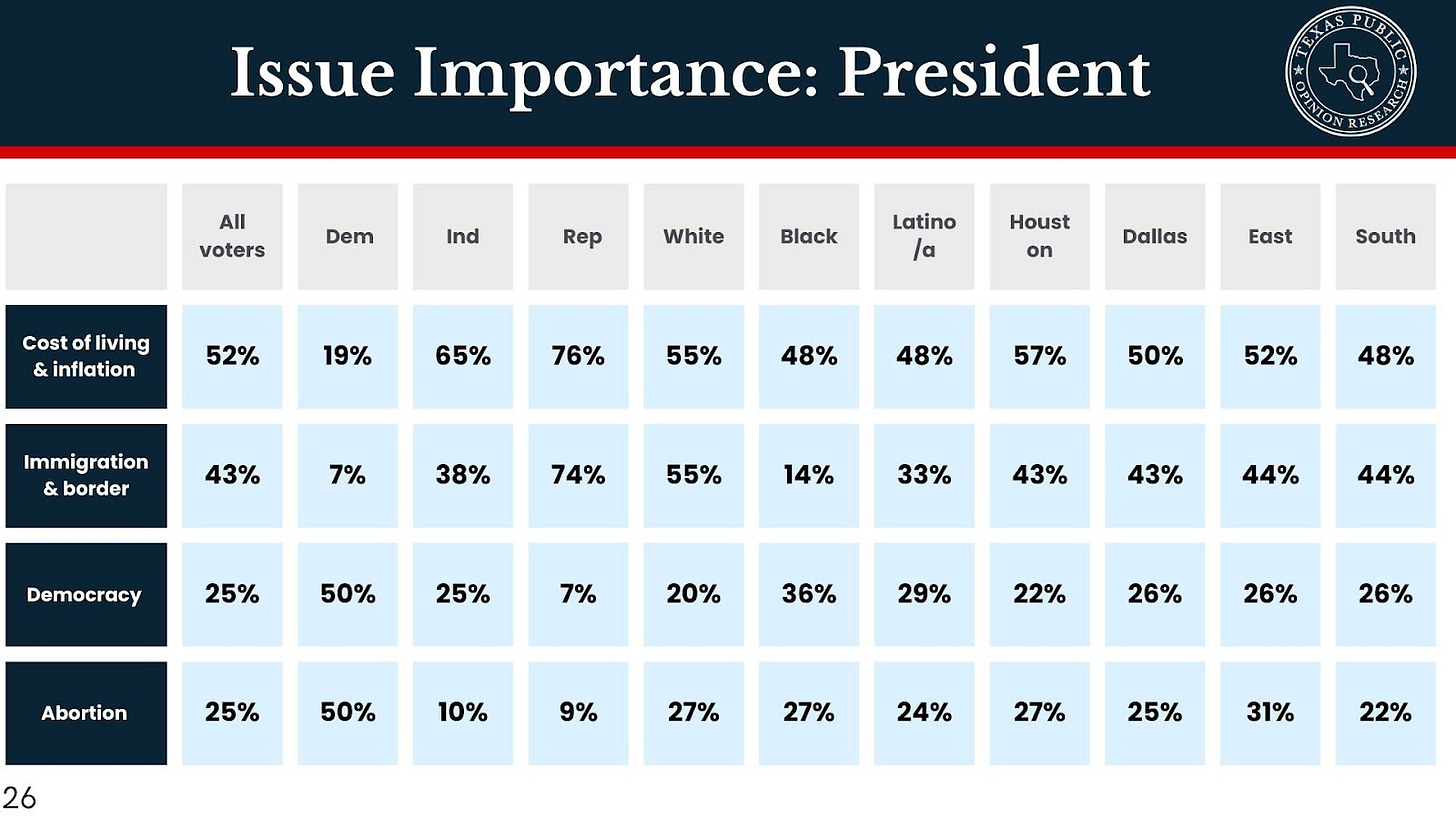What Drove Voters in 2024 Race for President
A look at why Texans voted the way they did in the 2024 presidential race.
Hey y’all, welcome back! In today’s post, we’re digging into the first set of findings from TPOR’s second quarterly poll—the first comprehensive survey which analyzes why Texans voted the way they did in the 2024 election.
The survey, conducted by Lake Research Partners the week after Nov. 5, examines the key issues and candidate qualities that influenced Texas voters. It also explores their perceptions of the candidates and their messages, when they decided how to vote, the role of information sources, reasons for not voting, and the views of crucial segments like Latinos and non-college-educated voters.
In this post, we’re zeroing in on the presidential race in the Lone Star State, diving into the data on what drove Texans’ decisions as they chose between Kamala Harris and Donald Trump.
Here are some of the key takeaways :
Trump’s Commanding Victory in Texas: Donald Trump decisively won Texas, beating Kamala Harris by 14 points (56%-42%). 53% of respondents in this poll said they voted for Donald Trump, while 39% voted for Harris, with 5% refusing to answer.
Cost of Living and Immigration Dominate Voter Concerns: Texans’ top concerns were clear: the cost of living/inflation and immigration/the border dominated as key voting issues.
Independents Mirror Republican Priorities: Independents aligned more closely with Republicans on priorities, with 65% prioritizing cost of living and 38% naming immigration and the border as top issues.
How the Presidential Race Shook Out
When the dust settled in Texas, our survey showed that 53% of respondents said they voted for Donald Trump, while 39% cast their ballot for Vice President Kamala Harris, with 5% refusing to answer. Some notable head-to-head data points include: Trump captured a plurality of independents with 45% to Harris’s 27%, and each split the Latino vote evenly at 47%.
Key Issues and Priorities
Texans were clear about their priorities. Cost of living (52%) and immigration/border issues (43%) led the way as the top two issues in the presidential election. Democracy and abortion followed as key concerns, each cited by 25% of voters, though their importance varied across demographic and partisan lines.
Among Democrats, 50% (double the percentage of the general electorate) listed democracy as a top issue, while Latino voters were more likely to emphasize democracy than the general electorate, with 29% selecting it as a top issue (+4).
On reproductive rights, the gender divide was stark; 33% of women identified abortion as a key issue compared to just 16% of men. Meanwhile, cost of living loomed largest for younger voters, with 59% of those under 30 naming it a top issue, compared to 51% of voters over 65, and 52% of the electorate overall.
Partisan Divide
We saw significant partisan divides on key issues. For Democrats, abortion rights (50%) and democracy (50%) topped the list of priorities. Republicans, on the other hand, emphasized immigration (74%) and the cost of living/inflation (76%).
Independents shared more in common with Republicans, with 65% citing the cost of living and inflation, and 38% naming immigration and the border as top issues. Interestingly, in South Texas—despite its proximity to the border—44% of voters identified immigration and the border as a priority, nearly identical to the statewide average of 43%.
Thanks for reading this far! Stay tuned for more polling and analysis from TPOR. In our next post, we’ll be diving into the results from the Texas Senate race. If you found this post useful, please share it with friends and family, and most importantly, subscribe for free!







